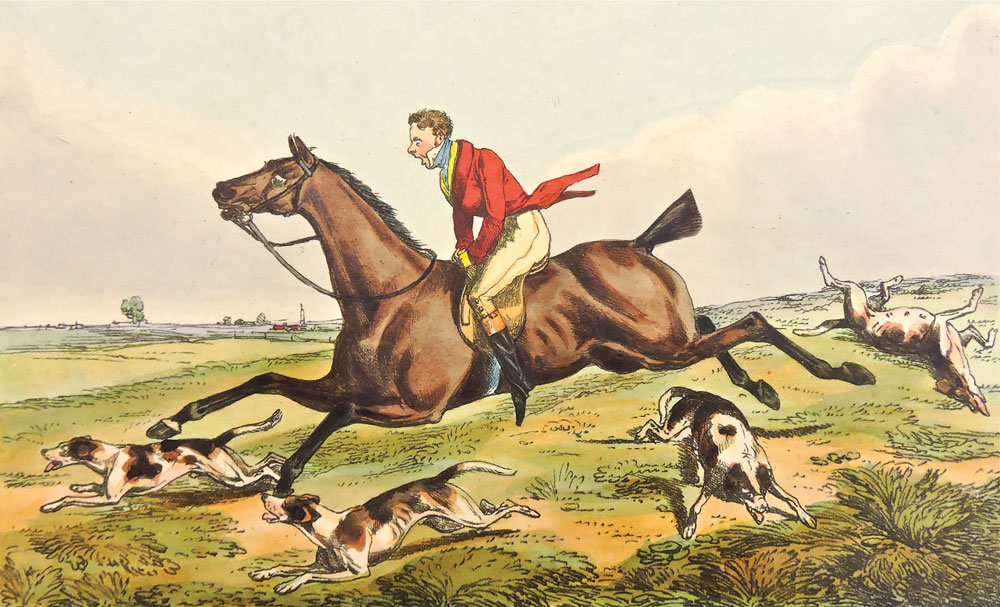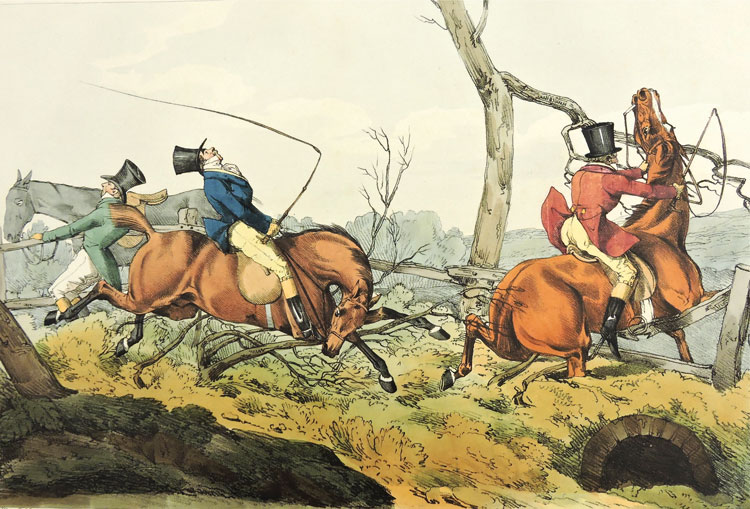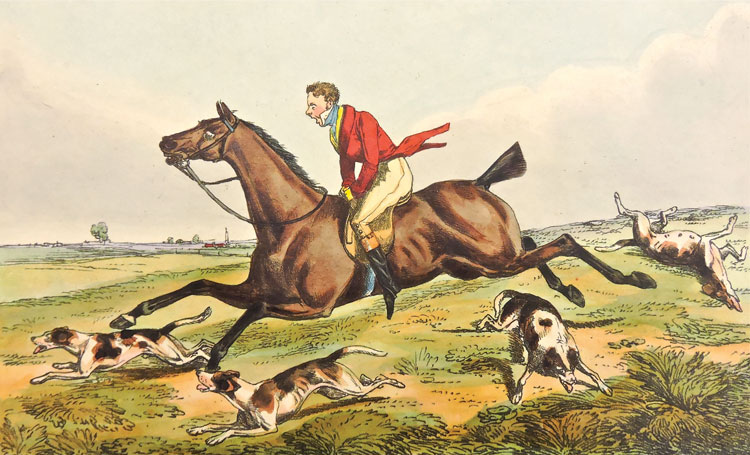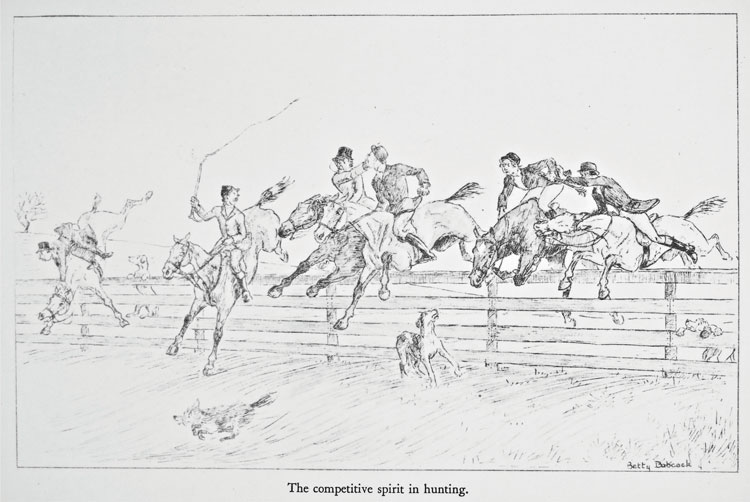Then & There Full Cry, The Colorful Language of Hunting

Story and photos by Richard Hooper
Some time ago, but not too far from here, in the company of a former MFH and another woman who had also been an avid hunter, I was part of a conversation about various sports and games. At some point I mentioned that one of the beauties of fox hunting was its lack of competitiveness, meaning that one did not capture all of the checkers from, or score more points against, your opponent. Evidently, my comments were highly incorrect and ignited a verbal barrage directed squarely at me. Their aim was quite accurate, and the shock wave from their salvo was palpable. I felt like a hound caught running riot. Nothing vulgar was uttered, but the language was highly tinted, if not colorful.

Is it not competitive to be first over the fence when three or five or more of you are racing after hounds and there is only room for one or two to squeeze through the narrowing approach to the jump? Who moves out in front? Who drops back? Who gets there first? Who got tossed? Who is with the hounds at the end? Who got lost? Don’t think for a moment that it is not competitive.
As for points, it seems that there is an obscure and mysterious scoring system that carries over from meet to meet and season to season, with points adding up (or occasionally subtracted) over entire life spans and carried forward within both the individual and collective psyches of everyone involved. It is an imprecise system of scoring, open to many points of view and interpretation, even revision over the years. There is a certain beauty to this, and it has been known to elicit colorful language, indeed, as the scores are hashed and rehashed, the final tally (ho) never really being recorded.
Competition as a catalyst for extending the palette of colorful hunting jargon was delightfully depicted by the wonderful illustrations of Betty Babcock in the book “Just Hunting” by Harry T. Peters (New York, 1935). Peters actually decried the competitive spirit in hunting, but HE acquiesced that it did give everyone “the chance to bump his best friend and use lots of hunting language.” Unfortunately, Peters’ discretion forbade him from recording any direct quotes, so we are reduced to making reference to our own experiences or using our imagination—and may I suggest not holding back.

The great and prolific sporting artist Henry Alken (1785-1851) was a master at playing with the captions to his prints. He would often describe an incident in glowing terms, while the imagery associated with it would depict a disaster. In a scene described as “Breaking Cover” three tyros and their horses are destroying the landscape and breaking down fences. In another entitled “Going at a Swishing Pace,” the rider, having lost his reins and grasping the pommel, is up with the hounds. However, he should not be trampling them. It is a definite no-no, certain to incur a colorful torrent of abuse—and, most likely, a subtraction from his accumulated score. The riding style could go either way.
In contrast to colorful language, “silence is golden,” or supposedly so. In his book, “Fields Elysian” (London: 1983) Simon Blow describes the combativeness between Violet Cripps, considered one of the best and most daring riders of her time, and her sister. They hunted in the “competitive Shires society” from Melton in the 1920s and ‘30s. Their rivalry must have been intense and, as Blow stated, “hunting accentuated it. It was said that they did not speak, even if they fell at the same fence.” One can only guess at the full spectrum of color, had they done so.

In an unbridled invective, purportedly written in 1733, with the title of “Essay on Hunting,” the author of which, only being known as “A Country Squire,” colorfully defends the benefits of hunting and rails against those opposed or indifferent to it. “Perhaps there is no greater Demonstration of Degeneracy of the present Age, than the Neglect and Contempt of this Manly Exercise. Those useful Hours that our Fathers employed on Horseback in the fields are lost to their Posterity betwixt a stinking Pair of Sheets. Balls and Operas, Assemblies and Masquerades so exhausts the Spirits of puny Creatures over Night, that Yawning and Chocolate are the main Labours and Entertainments of the Morning.” And even though he was putting pen to page “to make a book,” he equally castigated writers in that “it requires no greater Talents to write than to talk eternally.”
Well! With that, it is time to paraphrase the frequently encountered disclaimer that the views presented in this article do not necessarily represent those of the writer. ML


